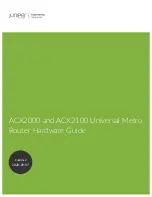
Korenix Technology Co., Ltd.
Industrial
Layer 3 Managed Ethernet Switch
_____________________________________________________________________________
Industrial Layer 3 Managed Ethernet SwitchUser Manual
Page: 1060/1568
11.2.5
User Management
11.2.5.1
Defining User Accounts Page
By default, two user accounts exist:
admin
, with 'Read/Write' privileges
guest
, with 'Read Only' privileges
By default, both of these accounts have blank passwords. The names are not case sensitive.
If you logon with a user account with 'Read/W rite' privileges (that is, as admin) you can use the User
Accounts screen to assign passwords and set security parameters for the default accounts, and to add
and delete accounts (other than admin) up to the maximum of six. Only a user with 'Read/Write'
privileges may alter data on this screen, and only one account may be created with 'Read/Write'
privileges.
Selection Criteria
User
- You can use this screen to reconfigure an existing account, or to create a new one. Use this
pull down menu to select one of the existing accounts, or select 'Create' to add a new one, provided
the maximum of five 'Read Only' accounts has not been reached.
Access Level -
User access level. The lowest user access level is 1 (Read-Only), and 15
(Read-W rite) is the highest. To suspend a user's access, set level to 0 (only a level 15 user has this
ability).
Authentication Protocol
- Specify the SNMPv3 Authentication Protocol setting for the selected user
account. The valid Authentication Protocols are None, MD5 or SHA. If you select None, the user will
be unable to access the SNMP data from an SNMP browser. If you select MD5 or SHA, the user
login password will be used as the SNMPv3 authentication password, and you must therefore specify
a password, and it must be eight characters.
Encryption Protocol
- Specify the SNMPv3 Encryption Protocol setting for the selected user
account. The valid Encryption Protocols are None or DES. If you select the DES Protocol you must
enter a key in the Encryption Key field. If None is specified for the Protocol, the Encryption Key is
ignored.
















































